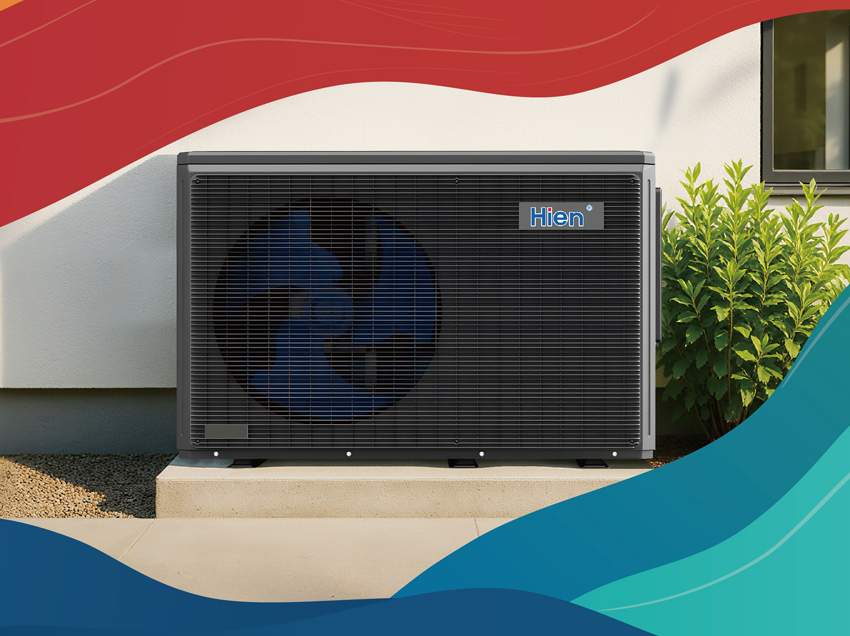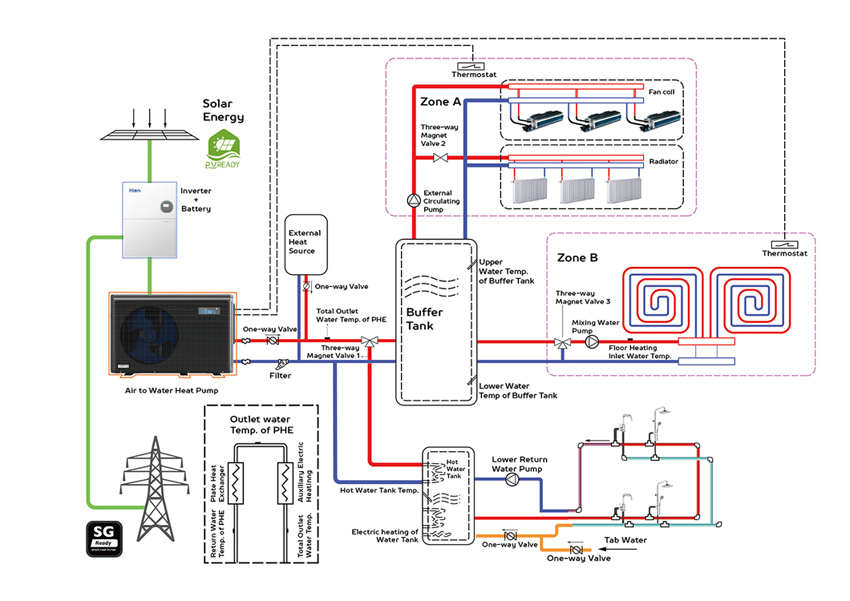In the world of HVAC (Heating, Ventilation, and Air Conditioning), few tasks are as crucial as the proper installation, disassembly, and repair of heat pumps. Whether you're a seasoned technician or a DIY enthusiast, having a comprehensive understanding of these processes can save you time, money, and a lot of headaches. This step-by-step guide will walk you through the essentials of mastering the installation, disassembly, and repair of heat pumps, with a focus on the R290 Monoblock Heat Pump.



On-Site Maintenance
A. I. Pre-Maintenance Inspection
- Worksite Environment Check
a) No refrigerant leakage is permitted in the room prior to servicing.
b) Continuous ventilation must be maintained during the repair process.
c) Open flames or high-temperature heat sources exceeding 370°C (which may ignite flames) are prohibited in the maintenance area.
d) During maintenance:All personnel must power off mobile phones.Radiating electronic devices must be deactivated.
Single-person, single-unit, single-zone operation is strongly recommended.
e) A dry powder or CO2 fire extinguisher (in operable condition) must be available in the maintenance area.
- Maintenance Equipment Inspection
a) Verify that the maintenance equipment is suitable for the heat pump system's refrigerant. Only use professional equipment recommended by the heat pump manufacturer.
b) Check if the refrigerant leak detection equipment has been calibrated. The alarm concentration setting must not exceed 25% of the LFL (Lower Flammability Limit). The equipment must remain operational throughout the entire maintenance process.
- R290 Heat Pump Inspection
a) Check that the heat pump is properly grounded. Ensure good ground continuity and reliable grounding before servicing.
b) Verify the heat pump's power supply is disconnected. Before maintenance, disconnect the power supply and discharge all electrolytic capacitors inside the unit. If electrical power is absolutely required during maintenance, continuous refrigerant leak monitoring must be implemented at high-risk locations to prevent potential hazards.
c) Inspect the condition of all labels and markings. Replace any damaged, worn, or illegible warning labels.
B. Leak Detection Before On - site Maintenance
- While the heat pump is in operation, use the leak detector or concentration detector (pump - suction type) recommended by the heat pump manufacturer (ensure that the sensitivity meets the requirements and has been calibrated, with a leak detector leakage rate of 1 g/year and a concentration detector alarm concentration not exceeding 25% of the LEL) to check the air conditioner for leaks. Warning: Leak detection fluid is suitable for most refrigerants, but do not use solvents containing chlorine to prevent corrosion of copper pipes caused by the reaction between chlorine and refrigerant.
- If a leak is suspected, remove all visible sources of fire from the site or extinguish the fire. Also, ensure that the area is well - ventilated.
- Faults that require welding of the internal refrigerant pipes.
- Faults that necessitate disassembly of the refrigeration system for repair.
C. Situations Where Repairs Must Be Conducted at a Service Center
- Faults that require welding of the internal refrigerant pipes.
- Faults that necessitate disassembly of the refrigeration system for repair.
D. Maintenance Steps
- Prepare the necessary tools.
- Drain the refrigerant.
- Check the R290 concentration and evacuate the system.
- Remove the faulty old parts.
- Clean the refrigerant circuit system.
- Check the R290 concentration and replace the new parts.
- Evacuate and charge with R290 refrigerant.
E. Safety Principles During On-site Maintenance
- When maintaining the product, the site should have sufficient ventilation. It is prohibited to close all doors and windows.
- Open flames are strictly forbidden during maintenance operations, including welding and smoking. The use of mobile phones is also prohibited. Users should be informed not to use open flames for cooking, etc.
- During maintenance in dry seasons, when the relative humidity is below 40%, anti-static measures must be taken. These include wearing pure cotton clothing, using anti-static devices, and wearing pure cotton gloves on both hands.
- If a flammable refrigerant leak is detected during maintenance, immediate forced ventilation measures must be taken, and the source of the leak must be sealed.
- If the damage to the product requires opening the refrigeration system for maintenance, it must be transported back to the repair shop for handling. Welding of refrigerant pipes and similar operations are strictly prohibited at the user's location.
- If additional parts are needed during maintenance and a second visit is required, the heat pump must be restored to its original state.
- The entire maintenance process must ensure that the refrigeration system is safely grounded.
- When providing on-site service with a refrigerant cylinder, the amount of refrigerant filled in the cylinder must not exceed the specified value. When the cylinder is stored in a vehicle or placed at the installation or maintenance site, it should be securely positioned vertically, away from heat sources, fire sources, radiation sources, and electrical equipment.
Post time: Jul-25-2025

